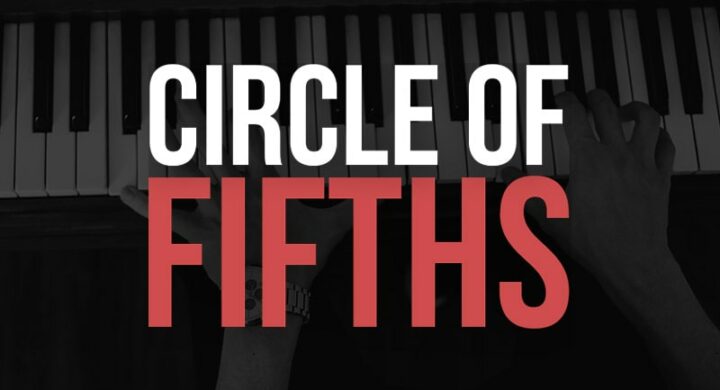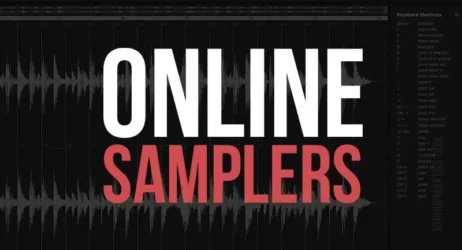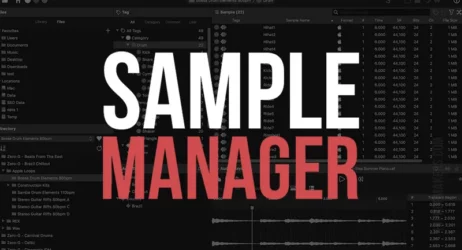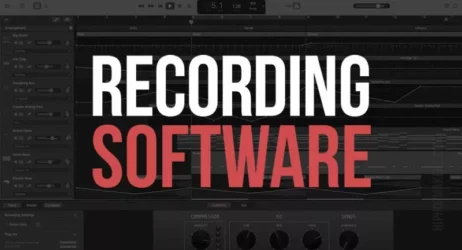This guide will answer what is the Circle of Fifths, how they work, how to use them, and tools to learn them.
What Is The Circle of Fifths?
The Circle of Fifths refers to the organization of twelve chromatic pitches in order of flawless fifth pitches. The sequence of the twelve pitches is positioned in a way that the closely related key signatures are always next to each other. The whole sequence is encapsulated in the form of a circle.
- What Is The Circle of Fifths
- How Does the Circle of Fifths Work
- How To Use the Circle of Fifths
- How Do You Learn the Circle of Fifths
- What Is A Circle of Fifths Chart
- Is There An Interactive Circle Of Fifths
- Should I Memorize The Circle Of Fifths
- How To Memorize the Circle of Fifths
- Circle of Fifth Chord Progressions

What Is The Circle of Fifths?
When you talk about music and rhythm, you might have come across the term ‘circle of fifths.’ A circle of fifths is an imperative concept to learn in musicology and worth studying.
A circle of fifths embodies the unique relationship and interdependency among the 12 pitches of the rhythmic chromatic scale, the linked major & minor keys, and their respective key signatures.
A chromatic pitch is a set of twelve unique pitches that are used in tonal music, with each note distinguished by an interval of a semitone.
These chromatic tones or pitches are arranged according to their resemblance with other key signatures, with the closely related ones always next to each other in a circle of music. The circle is called the circle of ‘fifths’ due to the interval correspondence between different key signatures.

The circle of fifths arranges pitches into a series of perfect fifths, which is typically shown as a circular ring with the pitches (and their matching keys) progressing clockwise. Composers frequently use the circle of fifths to illustrate the harmonic connections between pitches. Its design aids in creating and harmonizing choruses, the construction of chords, and the modulation to other keys within a musical piece.
When you look at a musical circle of fifths, you’ll see a number of sections, symbols, and letters. While they may look very inexplicable and involuted in the beginning, there’s no rocket science behind understanding them to the fullest.
- The outermost section of the fifth circle displays the actual key signatures.
- The lowercase alphabets represent the conforming minor keys.
- The uppercase alphabets symbolize the conforming major keys.
- The enharmonic equivalents are the regions where two similar keys are written. These keys are akin due to the fact that they possess the same key signature.
In a circle of fifths, if C is used as the beginning point, the succession goes as follows – C, G, D, A, E, B (=C), F (=G), C (=D), A, E, B, F. Continuing the pattern from F brings the sequence back to its beginning point of C.
Similarly, even though keys such as C Major possess an enharmonic equivalent, no one would ever create an art piece in B# Major since the results would become extremely wild, and people won’t like it. That is why C Major is displayed by itself rather than with an enharmonic equivalent tone.
How Does the Circle of Fifths Work?
A circle of fifths in music essentially pinpoints music intervals and how chromatic pitches are arranged in a circle. This circle encapsulates the 12 chromatic notes, with each note being a perfect ‘fifth’ apart from each other.
At the crown of the circle, you’ll find the note C. As you make your way clockwise around the circle, you’ll observe that all the notes are moving in perfect ‘fifths.’
In a perfect circle of fifths, you’ll see that as you stir clockwise, C is followed by G, followed by D, and then A.
This way, the circle covers all chromatic notes and finally comes back home to C. The accidental in the key of G major is F#. You’ll add a sharp with each step as you move clockwise by fifth intervals around the circle.
Three of the notes (B, F, and C) have two spellings near the bottom of the circle. The same pitch might be spelled differently. These are known as enharmonic equivalents. B and C are enharmonic equivalents on the circle. F and G are the same. Furthermore, C and D are on the same note.
How Do You Use the Circle of Fifths?
The circle of fifths in music helps artists understand music theory better and in a more refined way. Here’s how you can use the circle of music to your fruition.
Navigating Around The Circle
If you’re working with a circle of music, you need to know about your keys. You need to know which notes you’re going to ace and which chords will help you achieve that.
If you’re not a beginner in the world of music, the chances are that you can flawlessly put a name to music tonics (marked by stable rhythms and a homely harmony). Once you’ve identified the tonic, you can supplement the best of the notes in the circle of fifths by remembering the corresponding sharps and flats.
Working With Keys
If you want to make your melody sound theatrical, dramatic, and impactful, you need to do a key change or modulation to accomplish that. The circle of fifths helps you with that.
It does so by seamlessly throwing out clues and information about the most similar keys of the sequence.
If you see keys next to each other on the circle of fifths, the keys are very similar and distinguished by a single accidental. This entails that mixing them up won’t sound irritable to the audience.
The Magic of Borrowed Chords
Borrowed chords are chord progressions that are driven from outside the home key. Borrowed chords help branch out your music, and this can be done through a circle of fifths. V7/V and V7/IV are the most regularly utilized secondary dominant chords. These are derived from keys on the circle of fifths that are next to one another.
How Do You Learn the Circle of Fifths?
To learn the circle of fifths:
- Jot down the following to recall the total of flats in a key signature in order: BEAD-GCF.
- Remember all the sharps in a key signature in the following order: FCGDAEB.
- Create a mnemonic for F-Bb-Eb-Ab-Db-Gb-Cb to remember the Major scales in sequence for flats’ key signature.
- Keep in mind the minor scales for the flats: d-g-c-f-b?-e?-a?.
- Create a mnemonic for G-D-A-E-B-F#-C# to remember Major scales for sharps’ key signature.
- Keep in mind the minor scales for sharps: e-b-f#-c#-g#-d#-a#.
What Is A Circle of Fifths Chart?
The circle of fifths is a theoretical figure that helps students majoring in music to recall and grasp the 24 major and minor keys, key connections, and various chord interactions.
A circle of fifths provides a chart in the form of a quite intriguing circle from a logical point of view. It connects many of the common links seen in musicianship.
Is There An Interactive Circle Of Fifths?
Yes, there is an interactive circle of fifths. The interactive circle of fifths is a potent online music theory tool sculpted to help students and musicians in many ways.
The interactive circle of music tool helps artists and musicians to craft new music, interpret key signatures/scales/modes, and understand various chord progressions. It also helps music artists to transpose music to a dissimilar key effortlessly.
3 Free Interactive Circle of Fifths Tools

Should I Memorize The Circle Of Fifths?
The arrangement of chromatic tones in a circle of fifths proves very fruitful in identifying key signatures, so it might be a great move if you memorize the circle of fifths. However, it is not set in stone, and it’s totally up to you whether you want to learn it by heart or not.
Becoming word perfect in the circle of fifths means that you can seamlessly work out the number sharps or flats present in the F major without having to go around the circle to find out.
How Do You Memorize the Circle of Fifths for Major & Minor?
Here are some tips and mnemonics that can help you memorize the circle of fifths:
- Key signatures for flats: BEAD-GCF.
- Key signatures for sharps: FCGDAEB: Finally-Cats-Give-Dogs-Awful-Energy-Bites.
- Major scales for flats: F-Bb-Eb-Ab-Db-Gb-Cb: Frank-Buys-Eggs-At-Dog’s-Grocery-Club.
- Minor scales for flats: d-g-c-f-b?-e?-a?: dog’s-grocery-club-fills-basket-eggs-again.
- Major scales for sharps: G-D-A-E-B-F#-C#: Go-Down-At-Elmo’s-Bank-For-Christmas.
- Minor scales sharps: e-b-f#-c#-g#-d#-a#: Elmo’s-bank-for-Christmas-gives-doll-angels
What Is a Circle of Fifth Chord Progression?
A circle of fifth’s progression is one in which the chord roots are connected to one another, especially by climbing 4ths or dropping 5ths. The circle of fifths’ progressions is deemed melodically highly compelling in the sense that they draw our attention toward one chord, which is the tonic or key-chord.
In that way, they’re quite fulfilling. Since they’re so powerful and explicit, you’ll probably see many applications for the circle of fifths progressions in the melodies you compose.
Working rearward from your harmonic aim is the greatest technique to produce a circle of fifths progressions. In other words, begin by composing the chord you want to conclude on, and then construct a chord in front of it that is a fifth above or a fourth below.
Summary of Circle of Fifths
The Circle of Fifths refers to the order of 12 chromatic pitches in order of flawless fifths. It is positioned so that the closely related key signatures of the twelve pitches are always next to one another. There is a visual circle that represents the entire sequence.
I hope you found this information on the circle of fifths helpful.
If we missed anything, please share it in the comments.





